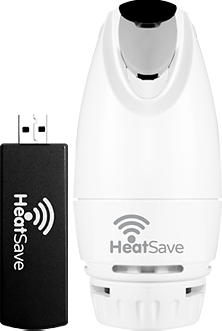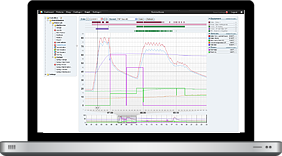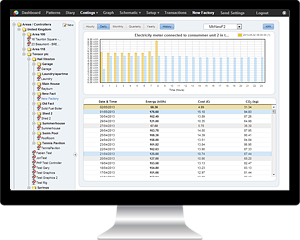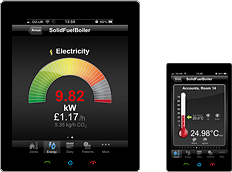NHS North East Ambulance Service slash energy bills with HeatingSave
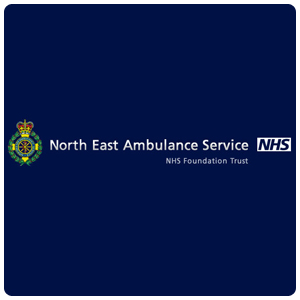
The North East Ambulance Service provides a number of NHS services, and covers the counties of County Durham, Northumberland, and Tyne and Wear, along with the boroughs of Darlington, Hartlepool, Middlesbrough, Redcar and Cleveland and Stockton-on-Tees.
The service operates from 60 stations spread across this vast region and employs more than 2,000 staff responding to over 360,000 emergency and urgent incidents per annum. Their fleet of more than 500 vehicles clocks-up close to 10 million miles per year.
After taking up the role of Environmental & Sustainability Manager at NHS North East Ambulance Service and reviewing the buildings within the trust’s portfolio, Ms. Clare Swift decided that immediate measures had to be implemented to make the buildings more energy efficient and help the Trust save money.
The first two targets were the Alnwick and Morpeth Ambulance Stations in Northumberland. The two sites use gas-fired boilers and radiators for heating and hot water provision and they are each permanently manned by 30 members of staff.
“As soon as I saw the buildings, I knew that something had to be done to make them more energy efficient” said Clare. “The existing heating controls were really poor – the stations were using old thermostats to push up the temperature to whatever level people working there aimed for. This was highly inefficient.”
Clare told our reporter that she had used HeatingSave when she worked for Northumberland Police, so she was accustomed to its impressive track record in cutting energy bills.
“I wanted to put in a system that would deliver immediate, cost-effective results. I was well aware of HeatingSave’s money-saving features and benefits”, she added.
Clare contacted HeatingSave and had free Energy Savings surveys carried out at both sites. Following a thorough review of the surveys’ results, she decided to install HeatingSave for both ambulance stations.
HeatingSave accurately watches the climbing room temperature and switches off the heat, using the residual heat within the boiler, to reach the correct room temperature. Thermostats and many BMS systems can’t do this and always overshoot the temperature wasting fuel and sometimes cause discomfort. These systems also oscillate greater around the desired temperature causing more fuel to be used than necessary.
The HeatingSave systems were installed at the Alnwick and Morpeth Ambulance Station’s in early 2014. No major problems were encountered at the time, apart from a “faulty temperature sensor in one of the annexes that was sorted out quickly”, Clare commented.
The HeatingSave systems installed at the North East Ambulance Service are web based and enable the service to create a structure of properties and multi-fuel heating systems within the organization. Multiple graphical and site schematics allow users to manage thousands of buildings, their infrastructure and maintenance.
“The heating systems at both sites are now controlled remotely, from a single location – the NHS North East Ambulance Service’s headquarters. For me, this is one of HeatingSave’s key selling points – I don’t have to physically go to the sites in order to control and monitor the heating systems or control temperature set-points” said Clare, who trained on how to use the HeatingSave software. “As far as I am concerned, HeatingSave is really simple to use and easy to understand”.
The NHS North East Ambulance Service is conservative in the savings made so far by saying “We’re saving at least 15% per each station annex where the system is installed”.
One of the key money-saving aspects of the NHS North East Ambulance Service systems is the use of the HeatingSave occupancy sensors and occupancy algorithms. With these, HeatingSave “knows” when a particular heating zone is manned or when it is vacant. HeatingSave then automatically turns down the heating when nobody is around and automatically and quickly turns up the heating when an area is occupied.
“As far as we’re concerned, the occupancy sensors are one of the HeatingSave system’s best features!” exclaimed Clare. “Our ambulance stations are not particularly large, so we installed occupancy sensors only in the rest rooms because those areas are the most frequently used. In this way, we can easily turn down or even switch off the heating whenever they are unoccupied.”
Another feature used by the North East Ambulance Service is the HeatingSave diary function to “set the right temperatures for each room, depending on planned occupancy”.
When asked what she likes most about the system, Clare immediately answered “The control side of it and especially the system’s graph”.
She went on to comment that “if people complain about being too cold or too hot, I can immediately check the graph and act accordingly – either by adjusting the temperature or by showing them that the ambient temperature is actually at the level they initially requested”.
HeatingSave enables the North East Ambulance Service to match the heating and energy use to the way in which the building is being used.
Clare added that she is happy with the quality of the after-sale service from HeatingSave, saying “The HeatingSave Operations Department reacted very quickly when we experienced a problem involving a temperature sensor. They scheduled a visit to our site in just three days’ time after the initial call and the engineer discovered very quickly what the problem was and sorted it out in a very professional manner.”
When Clare was asked if she would recommend HeatingSave to other ambulance trusts, her enthusiastic answer was “Yes” and summing up her experience of HeatingSave she concluded, “HeatingSave is a great system. It helps us save both energy and money”.
………………………………………………………………………………………………………………………………………………………………………………………………….
Customer Information
North East Ambulance Service NHS Foundation Trust
Bernicia House
Goldcrest Way
Newburn Riverside
Newcastle upon Tyne
NE15 8NY
Phone: 0191 430 2000
Web: http://www.neas.nhs.uk/


